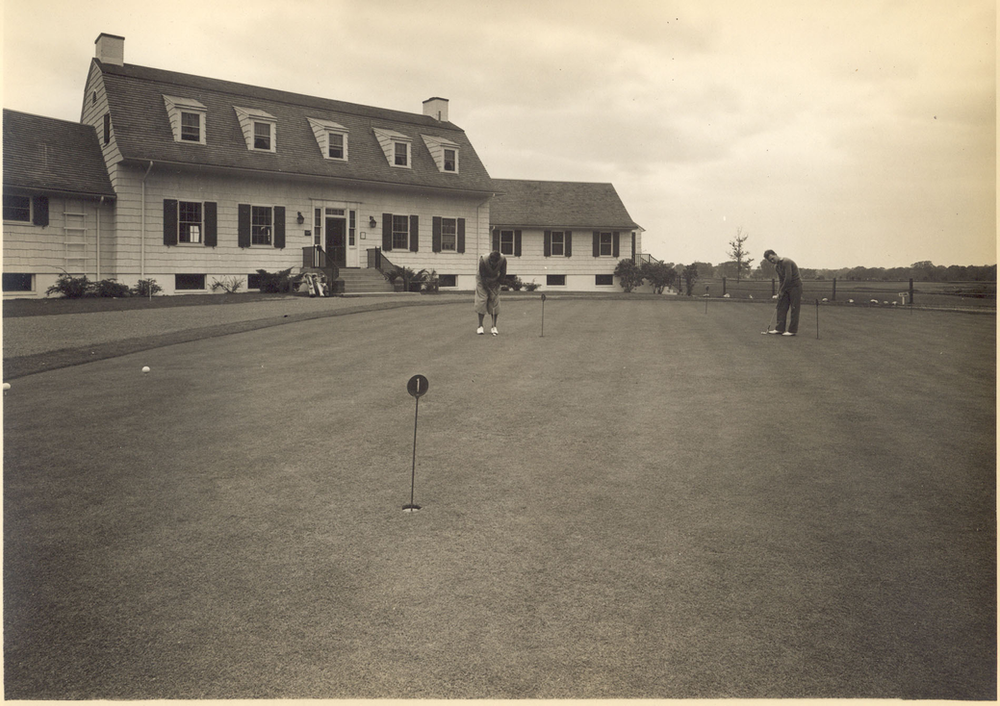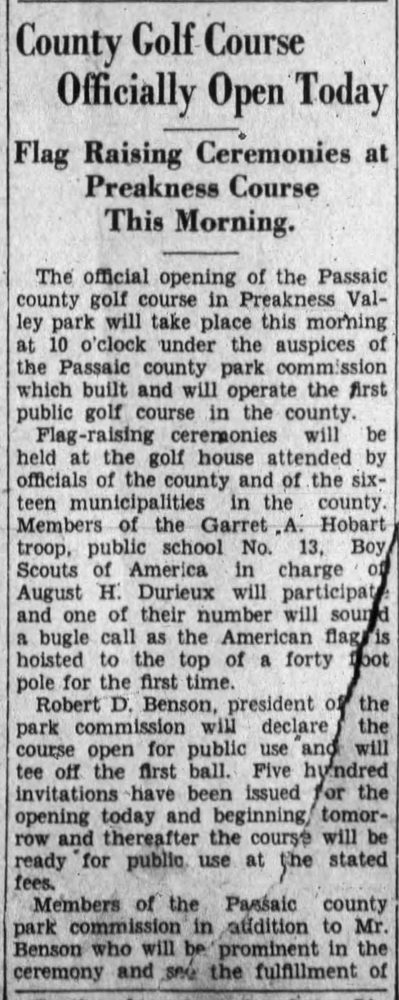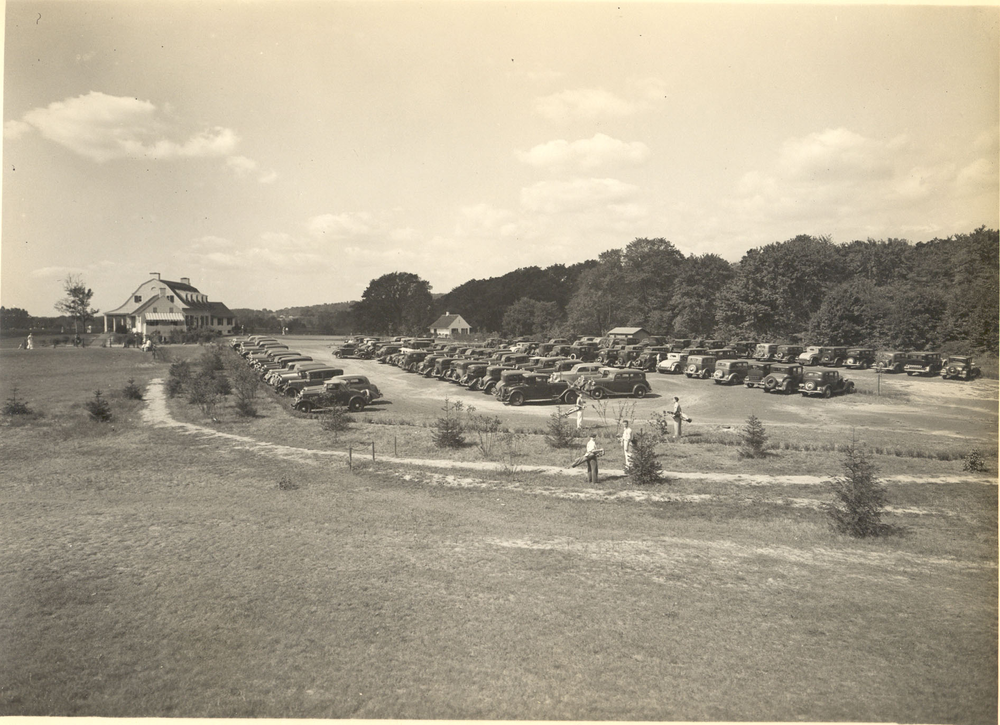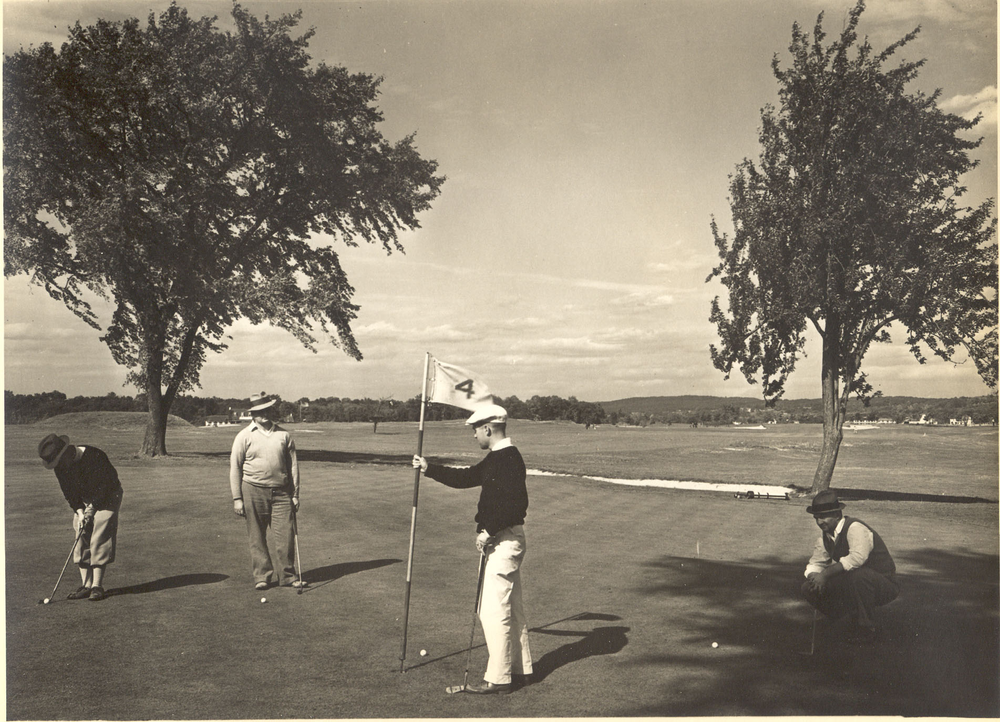A Short History of Preakness Valley Golf Course
By: Patrick Byrnes, Staff Member of the Passaic County Department of Cultural & Historic Affairs
Today marks the beginning of the 2023 Masters Tournament, and we're marking this golfing occasion by highlighting the history of Preakness Valley Golf Course- located on Totowa Road here in Wayne! This blog post is cross posted from our friends at the Olmsted 200 campaign; learn more about Frederick Law Olmsted and the Passaic County Park System here!

The earliest efforts towards developing a Passaic County Park System began in July of 1926 with the appointment of the Passaic County Park Commission. Their first action was the hiring of the most prestigious landscape architectural firm, the Olmsted Brothers, who conceptualized the locations of parks and open space areas within the county. Among the planned areas was the Preakness Valley Park in the Township of Wayne.
The movement to acquire Preakness Valley Park was started by the historical societies of the County for the preservation of the Dey Mansion, occupied by General George Washington as his headquarters during the Revolutionary War. Keeping in mind the efforts being made for the purchase of the Dey Mansion by the State, the Park Commission began the acquisition of adjoining lands. Three tracts purchased through sale gave the Commission the title to 256 acres of woodland, meadow and farm land. Ultimately this unit will comprise about 375 acres.
While the park was planned by the Olmsted Brothers firm, the golf course was merely a conceptual component to the overall design of the park. It was golf professional Martin H. O’Loughlin of Plainfield, NJ who actually designed the course. Prior to his contract with the Passaic County Park Commission, O’Loughlin constructed four other golf courses: Watchung Country Club in Plainfield, NJ, Prospect Hills Country Club in Fanwood, NJ, Matthew Hoffheimer Private Course in Warrenville, PA, and Armour Private Course in Chicago, IL.
O’ Loughlin was hired by the Commission in December 1929 to stake out and supervise the construction work of eighteen holes and furnishing plans for thirty-six holes for the sum of $2,500 at Preakness Valley Park. O’Loughling began work on the course in April 1930. In June of 1931, a month before the opening of the course, Frederick W. Loede Jr., engineer and superintendent of the Commission, requested further consultation by the Olmsted Firm to furnish a planting study and a study of the golf house approach and parking lot.

On dedication day, Wednesday, July 1, 1931, the course consisted of 18 holes (pending additional holes not yet completed and still under construction). They were christened the red and white nines. The ceremony commemorating the course's opening was extensively reported in area newspapers. Approximately 150 state, county and municipal officials attended. Flag raising ceremonies commenced at 10:00 a.m. led by Frederick W. Loede, Jr. Robert Dix Benson, commission president, turned the golf course over to the public, in whose behalf it was accepted by Passaic County Freeholder-Director Edgar H. Ellis. After the flag fluttered aloft, a Boy Scout bugler, Stewart Lee, sounded "Colors." Dignitaries made various speeches. The entire assemblage then proceeded to the first tee, where Mr. Benson, attired in golfing clothes drove off a gold painted golf ball. Other officials followed Mr. Benson's example.


Images from the Passaic County Department of Cultural & Historic Affairs.
The Wayne Museum operates under a shared services agreement between the Township of Wayne and the County of Passaic. The County manages and operates the Wayne Museum on the Township’s behalf through the County’s Department of Cultural & Historic Affairs.
